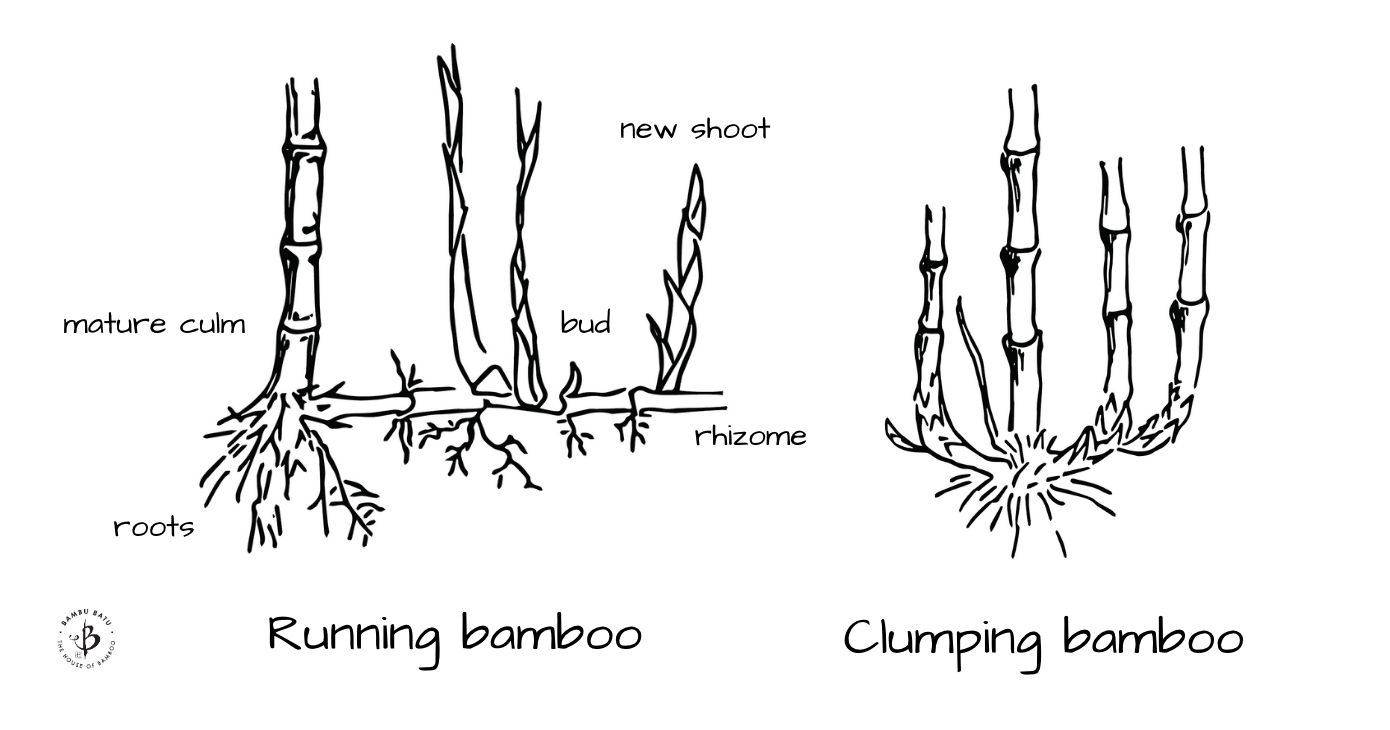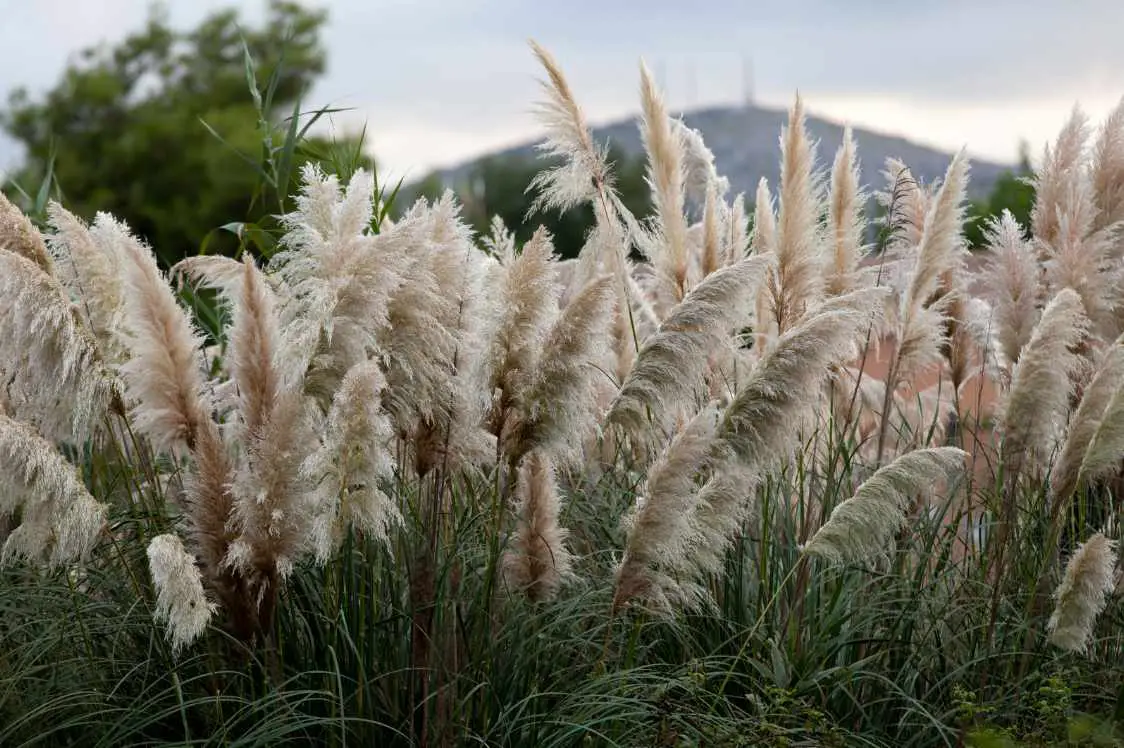Versatile, resilient, and renewable, the virtues of bamboo seem to go on forever. One of the plant’s most impressive characteristics is its vigorous growth rate. Combine that with an indestructible root system, and you have a real force of nature. But many consider bamboo an unstoppable force, one that’s better not to unleash in their pristine garden. And yet others absolutely love growing bamboo. So what’s the deal, is it safe to grow bamboo?
It is perfectly safe to plant bamboo in your garden if you are careful to select the appropriate species. Some varieties of running bamboo are so aggressive and tenacious that they can take over you garden in just a few years, becoming almost impossible to remove. But other types of bamboo, which we call clumping, have a more compact growth habit, making them far easier to maintain and contain.
Running bamboo vs Clumping bamboo
To understand why it may or may not be safe to plant bamboo, it’s essential to understand the difference between running and clumping bamboos.

Authors and botanists estimate the total number of bamboo species and cultivars at around 1,500. After a certain point, it becomes difficult to tell if you have a the different member of the same species, or a different species altogether. But without going down the rabbit hole of bamboo taxonomy, it’s best to begin by simply dividing these grasses into two classes: runners and clumpers.
Technically, botanists categorize them in separate “tribes“. Although you can find a few outliers and exceptions, tropical bamboos, Bambuseae, are typically clumping, and temperate bamboos, Arundinarieae, are generally runners.
As you can see in the diagram above, running bamboo has rhizomes that stretch out horizontally, “running” outward away from the main plant. We call these rhizomes leptomorph or monopodial. But many gardeners just call it a nuisance. Indeed, they do have a way of working themselves into places where they’re not wanted.
Clumping bamboo, on the other hand, is far more manageable, as the name suggests and the diagram indicates. These rhizomes, known as pachymorph or sympodial, usually just bend upwards, with a U-shape. So the new growths on these clumping species usually sprout up very close to the other culms, in a tight cluster.
Why bamboo’s bad reputation?
If it’s simply a matter of choosing a clumping bamboo instead of a running bamboo, then why do gardeners have such a hard time with it? It’s not even necessary to keep track of names like Arundinarieae and sympodial. But there are a handful of factors that have made running bamboo such an insidious threat.

Climate
As we mentioned above, clumping bamboo is also synonymous with the phrase tropical bamboo. Runners, by contrast, are considered temperate bamboos. In other words, clumping bamboos prefer warmer climates, and in many cases they won’t survive through winters with freezing temperatures.
Many clumpers are hardy down to about 20º F. But others will suffer frost damage at temperatures below 30º. Temperate bamboos, however, are way more cold-tolerant. Most running bamboo is hardy down to around 0º F, or as low as minus 10 or 15º.
So for gardeners in North America, temperate bamboo is usually better, more feasible option. Unless you live in Florida, the Deep South, or Southern California, it’s hard to grow tropical bamboo. So most North Americans and Europeans end up growing running bamboo.
Propagation
The physiology of running bamboo, with its long, leggy rhizomes, also makes it a lot easier to propagate. It’s really determined to expand and multiply by nature. The flowering of bamboo is very rare and sporadic, and it’s not how the grass generally produces offspring. Instead, it’s all about the shooting rhizomes.
Because of this, nurseries and garden centers have a much easier time multiplying their running bamboo. And a result, the running specimens is greater and their prices are lower. No surprise then that more customers end up taking home running bamboos.
Patience
Finally, the impatient gardener can sometimes be his own enemy. People want a plant that will fill in quickly, because they want to have a privacy screen, for example, right away. There’s no shame in being eager, or in wanting privacy. But the flip side of having a bamboo that fills in quickly is that it will continue to spread quickly for many years to come. And soon, the neighbor you wanted privacy from will find bamboo shoots sprouting up all over their garden. They’re probably not going to like that.
Containing your bamboo
If your climate and other preferences and pointing you towards a running bamboo, don’t worry. Running bamboo doesn’t have to run you ragged. There are a few ways to keep it under control. And we recommend either planting a rhizome barrier or digging a containment trench. You can even combine these two strategies.
Check out our detailed articles on Rhizome Barriers and Containment Trenches to learn all about how to manage your running bamboos with these effective techniques.
Play it safe with clumping bamboo
It’s easier to find running bamboos when you go to an ordinary garden center, but there are more clumping bamboo options than most people realize. Bambusa may be the most diverse genus of bamboo, and there are clumpers. Some of them are tropical, but many are subtropical and grow very well, as long as temps drop much below 20º F.
The genus Fargesia includes some of the most interesting varieties of bamboo. They are compact, clumping bamboos, but the most cold-tolerant of any bamboo species, often hardy down to -20º F.
Bamboo: Invasive or Aggressive?
A lot of people will say that bamboo is “invasive“. Some states and counties even have laws against certain species of bamboo, defining them as invasive. But I prefer to think of bamboo as “expansive”. It can have a tendency to spread, but it’s not actually invasive the way that many non-native species are.
That is, bamboo doesn’t cast its seeds over great distances and disrupt vast landscapes and ecosystems. If you plant a pampas grass in warmer climate, for example, you’ll soon have seedings of this exotic vegetation sprouting up everywhere.

Moreover, running bamboos have a limit to how far they will spread. They don’t just keep expanding indefinitely. If that were the case, if bamboo were as invasive as some critics make it out to be, it probably would have taken over the world by now.
But even on a small scale in a garden or a neighborhood, if you’re not careful, some species can become a real pain in the neck.
Species to beware of
Members of the genus Phyllostachys tend to be the most vigorous and fast-spreading. Golden bamboo (Phyllostachys aurea) is especially aggressive and tenacious. Similarly, P. bissetii and P. rubromarginata are also medium-sized and eager to expand. Timber varieties like P. vivax and Henon are actually somewhat easier to manage, as their thick culms grow from thick rhizomes, making them easier to detect and remove.
Some of the most aggressive bamboos are actually the small, dwarf-like varieties. Despite their diminutive stature, bamboo belonging to genus Sasa or Pleioblastus can be among the most outgoing. The good news is that a small root barrier is usually enough to keep their thin, shallow rhizomes in check.
Knowledge as the best precaution
If you’re delighted to learn that growing bamboo is safer then you thought, then you may want to keep reading to know even more. Take a look at some of the following articles to learn more about bamboo, why to plant it, how it spreads, and how to find the best clumping bamboo for your garden.




















